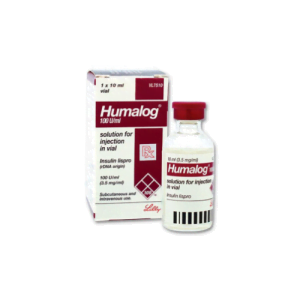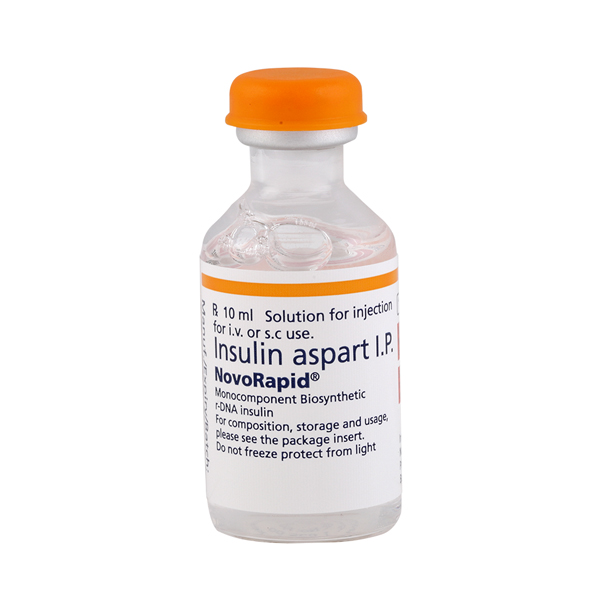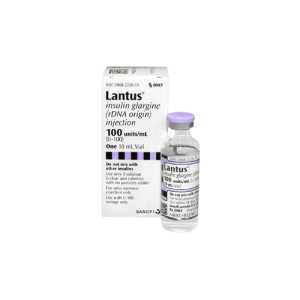Ozempic (semaglutide) is a GLP-1 agonist clinically known to reduce blood sugar and induce substantial weight loss. Weight loss occurs via the satiety signal that results from decreased gastric emptying. The glucose control occurs via the reduction of gluconeogenesis as well as by mimicking a peptide that stimulates a G protein-coupled receptor that increases insulin release at a given glucose level had the peptide not been present. The medicine has clearly been shown to be beneficial in terms of mortality and morbidity in individuals who are overweight and have poor glucose control. Maladaptive sugar regulation and obesity are independent risk factors for illness and death. Therefore, it is a medicine that simultaneously decreases independent risk factors and would benefit a patient’s health.
Ozempic mechanism of action
Due to the mechanism of action of the medicine, hypoglycemia was expected to be an uncommon occurrence and clinicians started to prescribe semaglutide off-label for weight loss in lieu of any blood sugar issues. Clinicians noticed overall good outcomes in patients of their practice , however, more confirmatory data was required.
Ozempic benefits
The new question remained: Is there a net statistical benefit based on large populations that semaglutide provides more benefits than harm if their sugars do not need to be lowered? While clinicians had their suspicion that the benefits outweigh the cons, it is essential to understand that an extensive study was necessary to assess this question correctly. Consider the following: imagine a drug causing 15% weight loss in a year with minimal side effects in 99% of patients but resulting in death in 1 % of patients in a way that was unpredictable in terms of screening their risk from a doctor’s office. A 1 % mortality rate is unacceptable according to today’s standards in weight-loss medicine, but this risk can be missed by individual clinicians who each treated 40 weight-loss patients off-label via semaglutide and only saw successes.
While the research was funded by Novo Nordisk manufacturers themselves, the research was FDA-approved, and the article was ultimately published in the esteemed New England Journal of Medicine, which would be extra meticulous in scrutinizing cherry-picked data to ensure the claim was authentic.
Summary of essential details in the study
- DOI: 10.1056/NEJMoa2307563
- Intention to treat analysis
- Ethical placebo
- Total number of people studies 17604
- Everyone age 45 or older with pre-existing CV issues (mean age 61.6)
- Everyone had BMI 27+ (mean BMI 33.3)
- Patients were followed until the 1st adverse CV event occurred, and the study for most people was observed or for 2 years whichever condition came first
- Semaglutide was titrated in standard fashion over several months to 2.4mg
- 8803 people received 2.4mg weekly semaglutide→569 had CV or related event
- 8801 people received placebo→701
- Hazard ratio of .8 p<.001
- The patients excluded were Diabetic patients, patients with stage 4 NY heart failure association, -patients that had end-stage chronic kidney disease, or patients within 60 days of coronary, carotid, or peripheral vascular revascularization.
- Mean weight loss in the treatment arm 9.39% above the placebo
- Significantly improved all aspects of the lipid panel in terms of LDL (-5.25%), HDL (+4.86%), and triglycerides (-18.34%)
It is essential to explain the significance of the key findings in a way that individuals outside of the medical field may understand. Therefore, clarification is given below.
Intention to treat (ITT) analysis means that a researcher will include data from test subjects whether or not they follow instructions. In the context of the NJEM article, the clinician would advise taking semaglutide 2.4 mg once weekly, following a healthy weight loss diet, and exercising daily to see the effect of semaglutide. If a patient sometimes misses their semaglutide injection or does not follow the lifestyle advice, the weight loss would be suboptimal compared to the full potential. ITT analysis negates the synergistic effects of combined pharmacological and lifestyle intervention. Consider the following situation below for clarity.
- Situation 1 healthy weight loss diet plus exercise results in 20% weight loss in 1 year
- Situation 2 Drug A without significant lifestyle changes 5% weight loss in 1 year
- Situation 3 Drug A plus healthy weight loss diet 30% weight loss in 1 year
- Situation 4 Drug A plus healthy weight loss diet plus exercise 35% in 1 year
The potential contribution of pharmacological intervention to weight loss may be as low as 5% based on ITT analysis or as high as 15% using Per Protocol (see below) data based on the permissive effects of lifestyle intervention, allowing the full potential of the medicine to result in weight loss.
Per protocol is the other extreme, where a clinician would exclude any test subject that wasn’t perfectly adhering to the testing regimen.
The bottom line is that the magnitude of the desired effect (in this case, weight loss) is always grossly underestimated in ITT trials. Per protocol, research is more accurate if someone is serious about losing weight.
Ethical standards for placebos mean that the non-intervention arm does not get an inert pill for their illness (in this case, obesity with a confirmed pre-existing CV disease) but rather a typical statin or metformin for mild insulin resistance. Because the study uses ethical standards, the magnitude of the weight loss effect of the semaglutide is likely understated since patients are already leveraging medicines with partially shared pharmacological targets.
The hazard ratio is quite straightforward. An HR of .8 after intervention means that after the treatment intervention is applied, the negative effect occurs only 80% as frequently as in the placebo arm (which is a good thing!).
Exclusion criteria are often added when the patients exhibit a very severe diseased state that would undermine the fairness of how well a substance would work beneficially. For instance, in patients with end stake (CDK), the 2.4 mg would likely cause harm to the patient where otherwise it would not to the vast majority of the population.
Bottom line: Semaglutide is overall beneficial for obesity regardless of whether an individual is diabetic, and it is virtually sure that the beneficial magnitude of the effect of semaglutide is much higher than the results published in NJEM if a patient combines exercise and healthy foods to a greater degree than the average patient.
Doctor’s Recommendation
Ozempic helps with weight loss and reduces the risk of serious health problems like heart issues. For some obese patients, semaglutide treatments can be an option before considering surgery for weight loss. However, surgery usually leads to more significant and longer-lasting weight loss compared to medications.
If you’re looking to lose weight and don’t have type 2 diabetes, it’s usually recommended to consider Wegovy instead of Ozempic. Talk to your healthcare provider for guidance.















